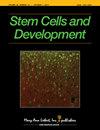Human Adipose-derived Mesenchymal Stem Cells Colonize and Promote Healing of Leprosy Ulcer by Inducing Neuro-vascularization.
IF 2.5
3区 医学
Q3 CELL & TISSUE ENGINEERING
引用次数: 0
Abstract
Leprosy ulcer is a chronic and recurrent disease resulting from nerve injury. While existing treatments partially facilitate ulcer healing, they exhibit limited ability to address localized nerve repair, leading to a risk of recurrence. Moreover, there is a dearth of animal models to evaluate the preclinical efficacy and safety of novel therapeutic approaches. Over the years, adipose-derived mesenchymal stem cells have been extensively employed in regenerative medicine as an optimal cell therapy source for fostering skin ulcer healing. They have also demonstrated the capacity to enhance nerve regeneration in vitro experiments and clinical trials. In this study, we established a NU/NU mouse foot pad leprosy ulcer model, transplanted human adipose-derived stem cells (hADSCs) into leprosy ulcers via local injection, and conducted subsequent follow-up. Our findings revealed that hADSCs persisted in the leprosy ulcer and facilitated healing process. In this respect, gross observation and histological analysis revealed increased granular formation, collagen synthesis, and re-epithelialization in the local ulcer area. RNA-Seq data revealed that the upregulated differential genes resulting from the transplantation intervention were not only enriched in pathways related to re-epithelialization and collagen synthesis but also contributed to local nerve regeneration. Furthermore, immunofluorescence assays revealed the increased expression of angiogenesis markers CD31 and VEGFa, cell proliferation markers Ki67 and TGF-β, and nerve regeneration markers β3-tubulin, SOX10, NGF, and NT-3. These results underscore the potential of hADSCs in promoting the healing of leprosy ulcers and offer valuable preclinical data for their prospective clinical application.人脂肪间充质干细胞通过诱导神经血管化定植并促进麻风病溃疡愈合
麻风溃疡是一种由神经损伤引起的慢性复发性疾病。现有的治疗方法虽然能部分促进溃疡愈合,但对局部神经修复的能力有限,因此有复发的风险。此外,目前还缺乏动物模型来评估新型治疗方法的临床前疗效和安全性。多年来,脂肪间充质干细胞作为促进皮肤溃疡愈合的最佳细胞疗法来源,已被广泛应用于再生医学领域。在体外实验和临床试验中,它们也被证明有能力促进神经再生。在这项研究中,我们建立了 NU/NU 小鼠脚垫麻风病溃疡模型,通过局部注射将人脂肪干细胞(hADSCs)移植到麻风病溃疡中,并进行了后续跟踪。我们的研究结果表明,hADSCs能在麻风溃疡中存活,并促进溃疡愈合。在这方面,大体观察和组织学分析表明,局部溃疡区域的颗粒形成、胶原合成和再上皮化增加。RNA-Seq数据显示,移植干预所导致的上调差异基因不仅富集在与再上皮化和胶原合成相关的通路中,还有助于局部神经再生。此外,免疫荧光检测显示血管生成标志物CD31和VEGFa、细胞增殖标志物Ki67和TGF-β以及神经再生标志物β3-tubulin、SOX10、NGF和NT-3的表达均有所增加。这些结果凸显了 hADSCs 在促进麻风病溃疡愈合方面的潜力,并为其未来的临床应用提供了宝贵的临床前数据。
本文章由计算机程序翻译,如有差异,请以英文原文为准。
求助全文
约1分钟内获得全文
求助全文
来源期刊

Stem cells and development
医学-细胞与组织工程
CiteScore
7.80
自引率
2.50%
发文量
69
审稿时长
3 months
期刊介绍:
Stem Cells and Development is globally recognized as the trusted source for critical, even controversial coverage of emerging hypotheses and novel findings. With a focus on stem cells of all tissue types and their potential therapeutic applications, the Journal provides clinical, basic, and translational scientists with cutting-edge research and findings.
Stem Cells and Development coverage includes:
Embryogenesis and adult counterparts of this process
Physical processes linking stem cells, primary cell function, and structural development
Hypotheses exploring the relationship between genotype and phenotype
Development of vasculature, CNS, and other germ layer development and defects
Pluripotentiality of embryonic and somatic stem cells
The role of genetic and epigenetic factors in development
 求助内容:
求助内容: 应助结果提醒方式:
应助结果提醒方式:


